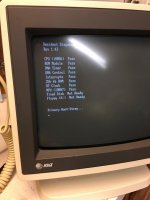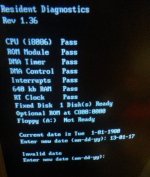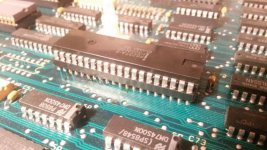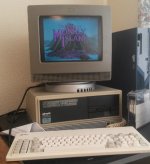AlG
Member
Thanks for the reply, and the advice help regarding the error codes.
Sounds like I'll go ahead with attempting to swap the DMA chip out. But I’m probably going to practice de-soldering a bit first. If that doesn't work I'll look at the memory.
I've got a temperature controlled soldering iron, but will still probably go for the cut the chip out and then de-solder the legs separately approach. As I’m not sure I’ll be able to get all 40 pins molten at the same time.
Alternatively I might considering picking up a cheap Hot Air re-flow gun, and following the technique outlined here:
http://hackaday.com/2016/01/12/desolder-dip-packages-like-a-pro/
But I’m not sure how well it would work on a 40-pin IC. Although the video makes it look very easy to de-solder memory chips.
I'll also probably remove the leaky battery at the same time, especially since there are concerns about it's affect on the motherboard. I'm assuming the system should run fine without a battery, until I can get round to replacing it.
Sounds like I'll go ahead with attempting to swap the DMA chip out. But I’m probably going to practice de-soldering a bit first. If that doesn't work I'll look at the memory.
I've got a temperature controlled soldering iron, but will still probably go for the cut the chip out and then de-solder the legs separately approach. As I’m not sure I’ll be able to get all 40 pins molten at the same time.
Alternatively I might considering picking up a cheap Hot Air re-flow gun, and following the technique outlined here:
http://hackaday.com/2016/01/12/desolder-dip-packages-like-a-pro/
But I’m not sure how well it would work on a 40-pin IC. Although the video makes it look very easy to de-solder memory chips.
I'll also probably remove the leaky battery at the same time, especially since there are concerns about it's affect on the motherboard. I'm assuming the system should run fine without a battery, until I can get round to replacing it.




